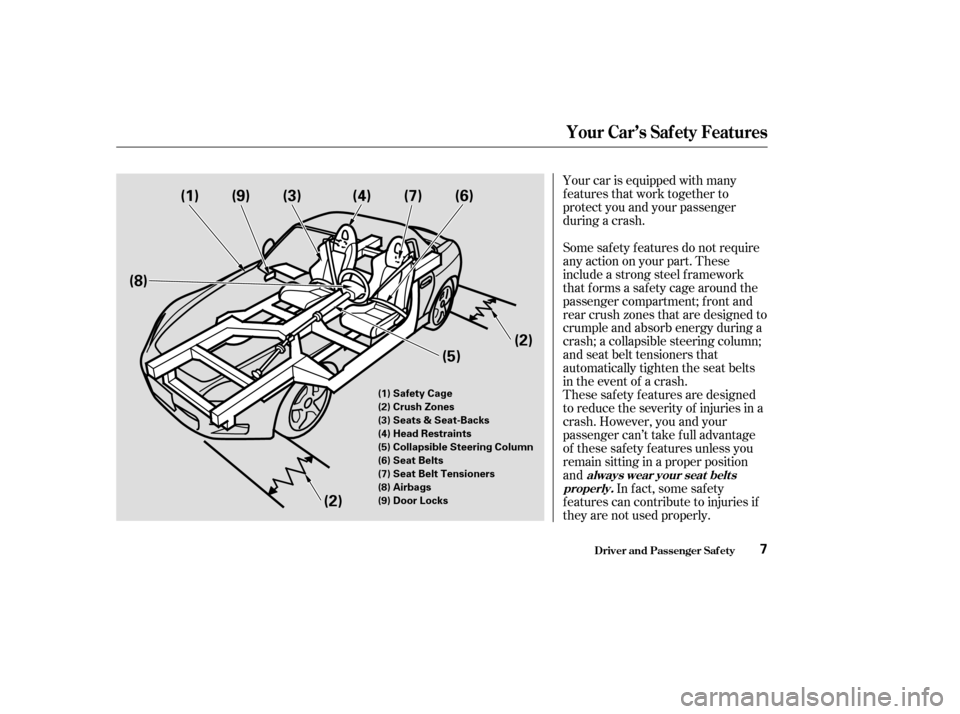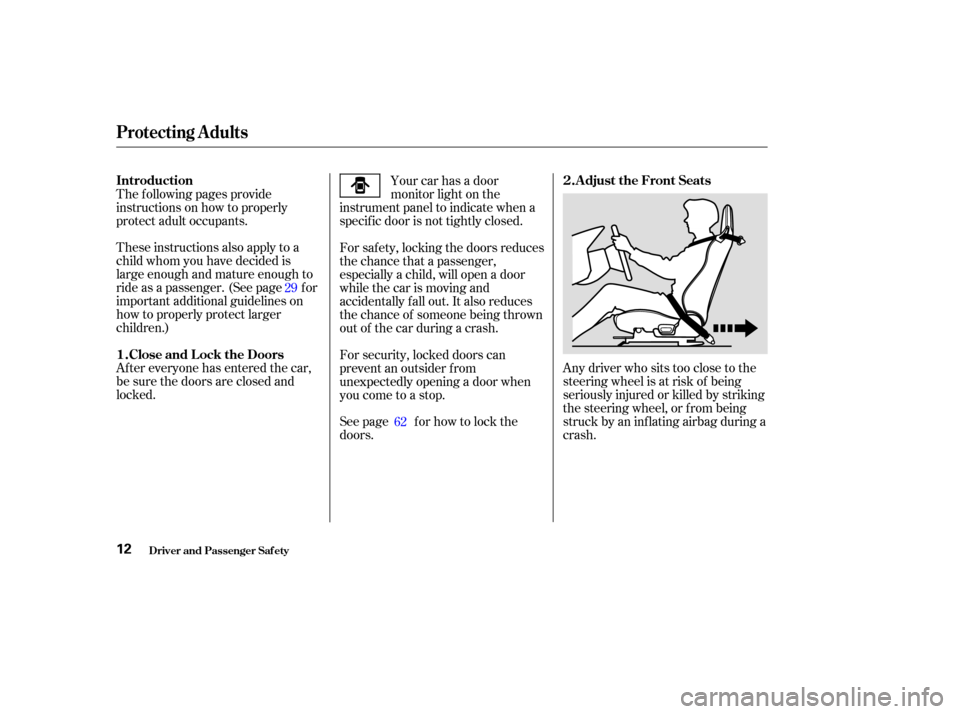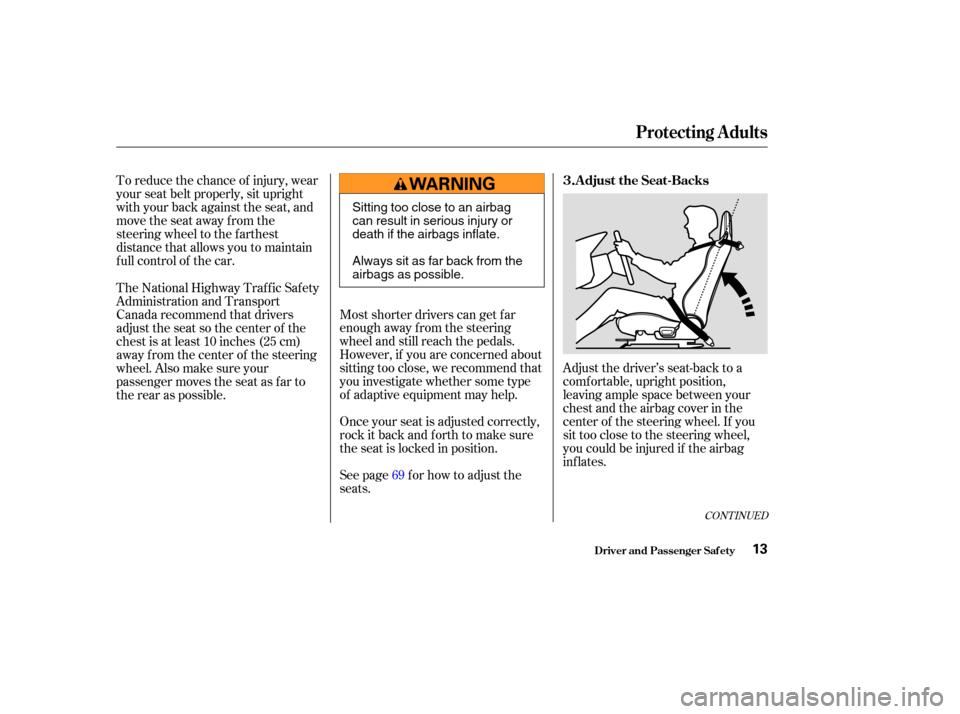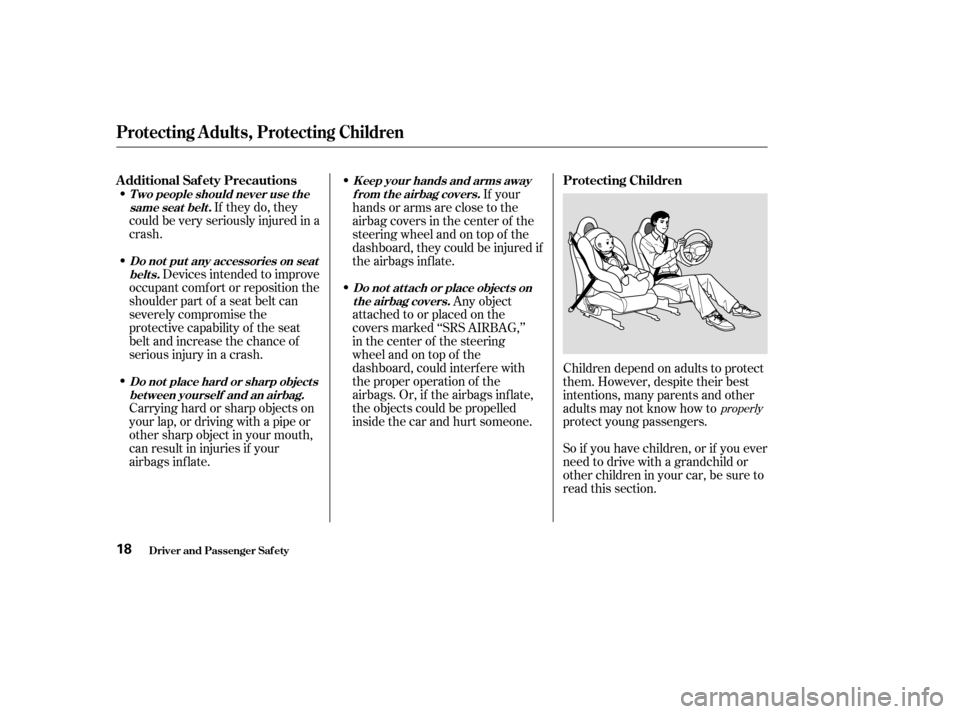steering HONDA S2000 2003 1.G Owners Manual
[x] Cancel search | Manufacturer: HONDA, Model Year: 2003, Model line: S2000, Model: HONDA S2000 2003 1.GPages: 280, PDF Size: 3.9 MB
Page 1 of 280

2003 S2000 Online Reference Owner's Manual Use these links (and links throughout this manual) to navigate through this reference.
For a printed owner's manual, click on authorized manuals or go to www.helminc.com. Contents
Owner's Identification Form
Introduction ........................................................................\
............................................................................. i
A Few Words About Safety ........................................................................\
.................................................. ii
Your Car at a Glance ........................................................................\
.............................................................. 2
Driver and Passenger Safety ........................................................................\
............................................... 5
Proper use and care of your car's seat belts, and Supplemental Restraint System.
Instruments and Controls........................................................................\
...................................................43
Instrument panel indica tor and gauge, and how to use dashboard and steering column controls.
Comfort and Convenience Features........................................................................\
.................................85
How to operate the climate control system, the audio system, and other convenience features.
Before Driving ........................................................................\
..................................................................... 119
What gasoline to use, how to break-in your new car, and how to load luggage and other cargo.
Driving........................................................................\
...................................................... .............................133
The proper way to start the engine, shift the tr ansmission, and park, plus towing a trailer.
Maintenance........................................................................\
...................................................... ...................147
The Maintenance Schedule shows you when you need to take your car to the dealer.
Appearance Care........................................................................\
................................................................. 207
Tips on cleaning and protecting your car. Things to look for if your car ever needs body repairs.
Taking Care of the Unexpected........................................................................\
.......................................217
This section covers several problems motorists someti mes experience, and how to handle them.
Technical Information........................................................................\
...................................................... .247
ID numbers, dimensions, capaciti es, and technical information.
Warranty and Customer Relations (U.S. and Canada)......................................................................261
A summary of the warranties covering your new Honda, and how to contact us.
Authorized Manuals (U.S. only)........................................................................\
.......................................265
How to order manuals and other technical literature.
Index ........................................................................\
......................................................................................... I
Service Information Summary
A summary of information you need wh en you pull up to the fuel pump.
Page 10 of 280

Your car is equipped with many
features that work together to
protect you and your passenger
during a crash.
These saf ety f eatures are designed
to reduce the severity of injuries in a
crash. However, you and your
passenger can’t take full advantage
of these saf ety f eatures unless you
remain sitting in a proper position
andIn f act, some saf ety
f eatures can contribute to injuries if
they are not used properly. Some saf ety f eatures do not require
anyactiononyourpart.These
include a strong steel f ramework
that forms a safety cage around the
passenger compartment; f ront and
rear crush zones that are designed to
crumple and absorb energy during a
crash; a collapsible steering column;
and seat belt tensioners that
automatically tighten the seat belts
in the event of a crash.
Driver and Passenger Saf ety
Your Car’s Saf ety Features
always wear your seat belts
properly.
7
(8) (1) (9) (3) (4) (7) (6)
(2)
(5)
(2)
(1) Safety Cage
(2) Crush Zones
(3) Seats & Seat-Backs
(4) Head Restraints
(5) Collapsible Steering Column
(6) Seat Belts
(7) Seat Belt Tensioners
(8) Airbags
(9) Door Locks
Page 12 of 280

This system also includes
an indicator light on the
instrument panel to alert you to a
possible problem with the system. The most important things you need
to know about your airbags are:
Always wear
your seat belt properly, and sit
upright and as f ar back as possible
f rom the steering wheel or
dashboard. To do their job, airbags must
inf late with tremendous f orce and
speed. So while airbags save lives,
they can cause serious injuries to
adults and larger children who are
not wearing seat belts, are not
wearing them properly, are sitting
too close to the airbag, or are not
sitting in a proper position. Inf ants
and small children are at an even
greater risk of injury or death.
Your car has a Supplemental
Restraint System (SRS) with frontal
airbags to help protect the driver and
a passenger. Airbags are
designed to deploy only during a
moderate to severe frontal
collision. The seat belts are the occupants’
primary protection in all types of
collisions. Airbags supplement
seat belts by providing extra
protection f or occupants’ heads
and chests.
Driver and Passenger Saf ety
Airbags
What you should do:
Airbags can pose serious hazards.
Airbags of f er no protection in side impact s, rear impact s, rollovers,or minor collisions.
Airbags do not replace seat belts.
Your Car’s Saf ety Features
9
Page 13 of 280

Head restraints can help protect you
f rom whiplash and other injuries.Keeping your doors locked reduces
thechanceof beingthrownoutof
the car during a crash. It also helps
prevent occupants f rom accidentally
opening a door and f alling out, and
outsiders f rom unexpectedly opening
your doors.
Move the seats
as far back as possible, and keep
adjustable seat-backs in an upright
position whenever the car is moving.
Your car’s seats are designed to keep
you in a comf ortable, upright
position so you can take f ull
advantage of the protection offered
by seat belts and the energy
absorbing materials in the seats.
How you adjust your seats and seat-
backs can also affect your safety. For
example, sitting too close to the
steering wheel or dashboard
increases the risk of you or your
passenger being injured by striking
theinsideof thecar,orbyan
inf lating airbag.
Reclining a seat-back too f ar reduces
the seat belt’s ef f ectiveness and
increases the chance that the seat’s
occupant will slide under the seat
belt in a crash and be seriously
injured. Seats & Seat-Backs
Door L ocks
Head Restraints
Driver and Passenger Saf ety
Your Car’s Saf ety Features
What you should do:
10
Page 14 of 280

Seat-backs are upright (see page).
To make sure you and your
passenger get the maximum
protection f rom your car’s saf ety
f eatures, check the f ollowing each
time before you drive away:
A small child riding in a f orward-
f acing child seat is properly
restrained (see page ). Both doors are closed and locked
(see page ).
All cargo is properly stored or
secured (see page ).
Remember, however, that no saf ety
system can prevent all injuries or
deaths that can occur in severe
crashes, even when seat belts are
properly worn and the airbags deploy.
Occupants are sitting upright and
as far back as possible from the
steering wheel and dashboard
(see page ). You and any adult passenger, or a
larger child who has outgrown
child seats, are wearing your seat
belts and wearing them properly
(see page ). The rest of this section gives more
detailed inf ormation about how you
can maximize your saf ety.
15
26
13 12
12 128
Driver and Passenger Saf ety
Your Car’s Saf ety Features
Pre-Drive Saf ety Checklist
11
Page 15 of 280

Any driver who sits too close to the
steering wheel is at risk of being
seriously injured or killed by striking
the steering wheel, or f rom being
struck by an inf lating airbag during a
crash.
Af ter everyone has entered the car,
be sure the doors are closed and
locked. The f ollowing pages provide
instructions on how to properly
protect adult occupants.
These instructions also apply to a
child whom you have decided is
large enough and mature enough to
ride as a passenger. (See page f or
important additional guidelines on
how to properly protect larger
children.) Your car has a door
monitor light on the
instrument panel to indicate when a
specif ic door is not tightly closed.
For saf ety, locking the doors reduces
the chance that a passenger,
especially a child, will open a door
while the car is moving and
accidentally f all out. It also reduces
the chance of someone being thrown
out of the car during a crash.
For security, locked doors can
prevent an outsider f rom
unexpectedly opening a door when
you come to a stop.
See page f or how to lock the
doors.
29
62
Driver and Passenger Saf ety
Protecting Adults
Introduction A djust the Front Seats
Close and L ock the Doors
1. 2.
12
Page 16 of 280

CONT INUED
To reduce the chance of injury, wear
your seat belt properly, sit upright
with your back against the seat, and
movetheseatawayfromthe
steering wheel to the f arthest
distance that allows you to maintain
f ull control of the car.Once your seat is adjusted correctly,
rock it back and f orth to make sure
the seat is locked in position.
See page f or how to adjust the
seats.Adjust the driver’s seat-back to a
comf ortable, upright position,
leaving ample space between your
chest and the airbag cover in the
center of the steering wheel. If you
sit too close to the steering wheel,
you could be injured if the airbag
inf lates.
Most shorter drivers can get f ar
enough away f rom the steering
wheel and still reach the pedals.
However, if you are concerned about
sitting too close, we recommend that
you investigate whether some type
of adaptive equipment may help.
The National Highway Traffic Safety
Administration and Transport
Canada recommend that drivers
adjust the seat so the center of the
chest is at least 10 inches (25 cm)
away f rom the center of the steering
wheel.Alsomakesureyour
passenger moves the seat as f ar to
the rear as possible.
69
Driver and Passenger Saf ety
Protecting Adults
Adjust the Seat-Backs
3.
13
Sitting too close to an airbag
can result in serious injury or
death if the airbags inflate.
Always sit as far back from the
airbags as possible.
Page 20 of 280

Pregnant women should also sit
upright and as f ar back as possible
f rom the steering wheel or
dashboard. This will reduce the risk
of injuries to both the mother and
her unborn child that can be caused
by a crash or an inf lating airbag.
Each time you have a check-up, ask
your doctor if it’s okay f or you to
drive.
Because protecting the mother is the
best way to protect her unborn child,
a pregnant woman should always
wear a seat belt whenever she drives
or rides in a vehicle.
Remember to keep the lap portion of
the belt as low as possible across
your hips.
Protecting Adults
Driver and Passenger Saf ety
Advice f or Pregnant Women
17
Page 21 of 280

If they do, they
could be very seriously injured in a
crash.
Devices intended to improve
occupant comf ort or reposition the
shoulder part of a seat belt can
severely compromise the
protective capability of the seat
belt and increase the chance of
serious injury in a crash.
Carrying hard or sharp objects on
your lap, or driving with a pipe or
other sharp object in your mouth,
can result in injuries if your
airbags inflate. If your
hands or arms are close to the
airbag covers in the center of the
steering wheel and on top of the
dashboard, they could be injured if
the airbags inf late.
Any object
attached to or placed on the
covers marked ‘‘SRS AIRBAG,’’
in the center of the steering
wheelandontopof the
dashboard, could interf ere with
the proper operation of the
airbags. Or, if the airbags inflate,
the objects could be propelled
inside the car and hurt someone. Children depend on adults to protect
them. However, despite their best
intentions, many parents and other
adults may not know how to
protect young passengers.
So if you have children, or if you ever
need to drive with a grandchild or
otherchildreninyourcar,besureto
read this section.
properly
Driver and Passenger Saf ety
T wo people should never use t he
same seat belt .
Do not put any accessories on seatbelts.
Do not place hard or sharp object sbet ween yourself and an airbag. K eep your hands and arms away
f rom t he airbag covers.
Do not at t ach or place object s onthe airbag covers.
Additional Saf ety Precautions Protecting Children
Protecting Adults, Protecting Children
18
Page 39 of 280

An indicator light on the
instrument panel that alerts you to
a possible problem with the
system (see page ).
Emergency backup power in case
your car’s electrical system is
disconnected in a crash.
Your Supplemental Restraint System
(SRS) includes:
Two f ront airbags. The driver’s
airbag is stored in the center of
the steering wheel; the f ront
passenger’sairbagisstoredinthe
dashboard. Both are marked ‘‘SRS
AIRBAG.’’
Automatic seat belt tensioners
(see page ).
Sensors that can detect a
moderate to severe frontal
collision.
A sophisticated electronic system
that continually monitors
inf ormation about the sensors, the
control unit, and the airbag
activators when the ignition is ON
(II). If you ever have a moderate to
severe f rontal collision, the sensors
will detect rapid deceleration and
signal the control unit to instantly
inflate the airbags and activate the
automatic seat belt tensioners.
34 38
Additional Inf ormation About Your SRS
Driver and Passenger Saf ety
SRS Components
How Your A irbags Work
36